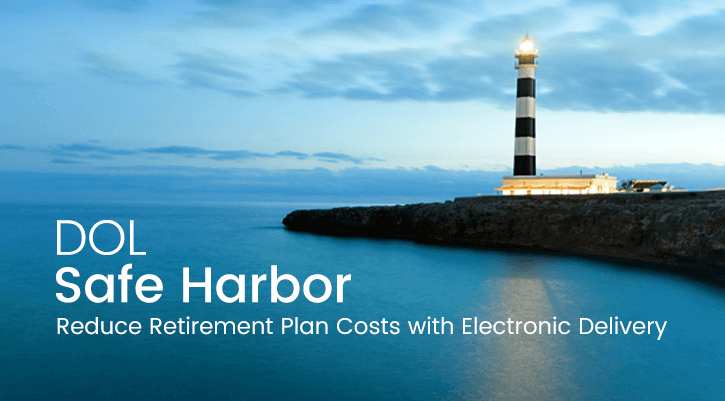That, of course, is an abbreviated version of the U.S. Postal Service motto. The full version says, “Neither snow nor rain nor heat nor gloom of night stays these couriers from the swift completion of their appointed rounds.” Interestingly, the phrase is taken from an age-old book by the Greek historian Herodotus, and refers to messengers in the Persian Empire. Apparently, the swift, reliable delivery of important information has been held in high esteem for several thousand years.
Mind you, it’s not the official motto despite being inscribed on the front of the James A. Farley Post Office in New York City. In fact, the U.S.P.S. doesn’t have an official motto. Yet the essence of this noble phrase was never truer – and the service more valued – than during the COVID-19 pandemic.
As plan sponsors well know, the law requires workplace retirement plans to provide a number of key information disclosures to participants, not the least of which is that most important document, the participant statement. While these disclosures come in various lengths and complexities – with some more readable and relevant than others – timely delivery of the information is essential. Indeed, failure to deliver that information on a timely basis brings with it penalties and fines for the plan sponsor.
But what if the traditional interoffice distribution of materials doesn’t suffice because everyone is now working from home?
With an incredible sense of timing, just as the pandemic set in, the Department of Labor (DOL) unveiled final regulations regarding a new Safe Harbor protection for plan sponsors to utilize electronic delivery for these important plan disclosures.
The option of using electronic delivery for such materials isn’t new, but doing so requires that participants “opt in” to that method. The new Safe Harbor, subject to certain conditions, allows plan sponsors to set electronic delivery as the default option for delivery, rather than an exception.
Defaulting to electronic delivery will, of course, require plan administrators to have the electronic addresses that enable this form of communication with covered individuals, and the new regulations outline a variety of ways to comply with that condition. The final rule requires plan administrators to furnish each individual who opts in to the new safe harbor with an initial notification, ON PAPER, that some or all of the plan’s covered documents will be furnished electronically to an electronic address. Plan administrators must also have a process in place to know if the email is undeliverable, and must take steps to remedy or resolve that situation, should it occur.
Electronic delivery of plan notifications offers many advantages, not the least an opportunity for significant cost savings to the plan. In fact, over 10 years, the DOL estimates the new safe harbor will save plans approximately $3.2 billion net, annualized to $349 million per year (using a 3% discount rate).
Plan sponsors will now know – many perhaps for the first time – that the materials have been received, although that doesn’t guarantee participants have actually read the email. It does, however, provide participants with several viewing and archival capabilities that aren’t available with traditional “snail mail.”
For example, participants who have trouble reading the “fine” print can readily expand it on screen for easier viewing. Those for whom English is a second language can apply translator software to the text. And the email is readily filed for later viewing.
If participants follow basic cyber security protocols, these email communications, which contain sensitive and personal financial information, are likely more secure than those delivered via traditional mail. Plus, personal email addresses generally travel with individuals when they move, making it easier for plan administrators to have at least one form of up to date contact information.
Emailing plan documents even has a positive impact on the environment, as no trees are harmed in the production of the emails.
While the new safe harbor provides more flexibility, as noted above it also states that participants who prefer paper can continue to receive it. For plan sponsors who aren’t ready to make that switch, the new safe harbor simply gives them an option to expand and enhance their information delivery process if and when they are ready to do so. Those who do embrace this new option should bear in mind that plan administrators are prohibited from charging covered individuals a fee in connection with their exercise of these rights, or from having “procedurally cumbersome or complex processes” for opting for paper. Additionally, individuals must receive “multiple reminders on different mediums of these rights.”
It’s been said that “the mail must go through,” and thanks to the new electronic delivery safe harbor, plan sponsors not only have a new option to ensure that result, participants will likely find it more convenient and reliable as well.
About the Author
Nevin E. Adams, JD is Chief Content Officer for the American Retirement Association, a non-profit organization dedicated to educating retirement plan and benefits professionals and creating a framework of policy to enable every working American to have a comfortable retirement. He has extensive experience in senior management at large financial services organizations and as a writer, editor and thought leader in the retirement plan industry.
The views expressed in this article are those of the author and do not necessarily represent the views of PenChecks Trust©, its subsidiaries or affiliates.

0 Comments